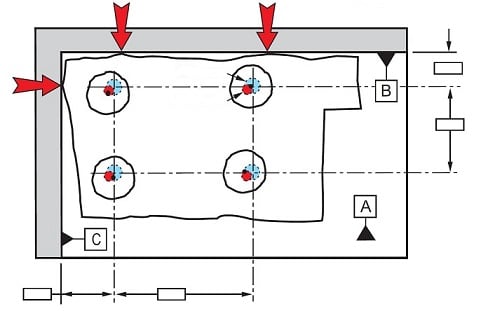ASME Y14.5-2009
On both figures 7-3 and 7-4 some perpendicularities are to be added (just for the sake of this discussion to make the drawing “complete")
On 7-3:
- on datum feature B: perpendicularity .xxx tol to A primary
- on datum feature C: perpendicularity .xxx tol to A primary and B secondary
On 7-4:
- on datum feature B (middle plane): perpendicularity .xxx tol to A primary
- on datum feature C (middle plane): perpendicularity .xxx tol to A primary and B secondary
Should I understand that is a significant difference between the squareness allowed (parallelogram effect) between these two schemes?
On both figures 7-3 and 7-4 some perpendicularities are to be added (just for the sake of this discussion to make the drawing “complete")
On 7-3:
- on datum feature B: perpendicularity .xxx tol to A primary
- on datum feature C: perpendicularity .xxx tol to A primary and B secondary
On 7-4:
- on datum feature B (middle plane): perpendicularity .xxx tol to A primary
- on datum feature C (middle plane): perpendicularity .xxx tol to A primary and B secondary
Should I understand that is a significant difference between the squareness allowed (parallelogram effect) between these two schemes?

